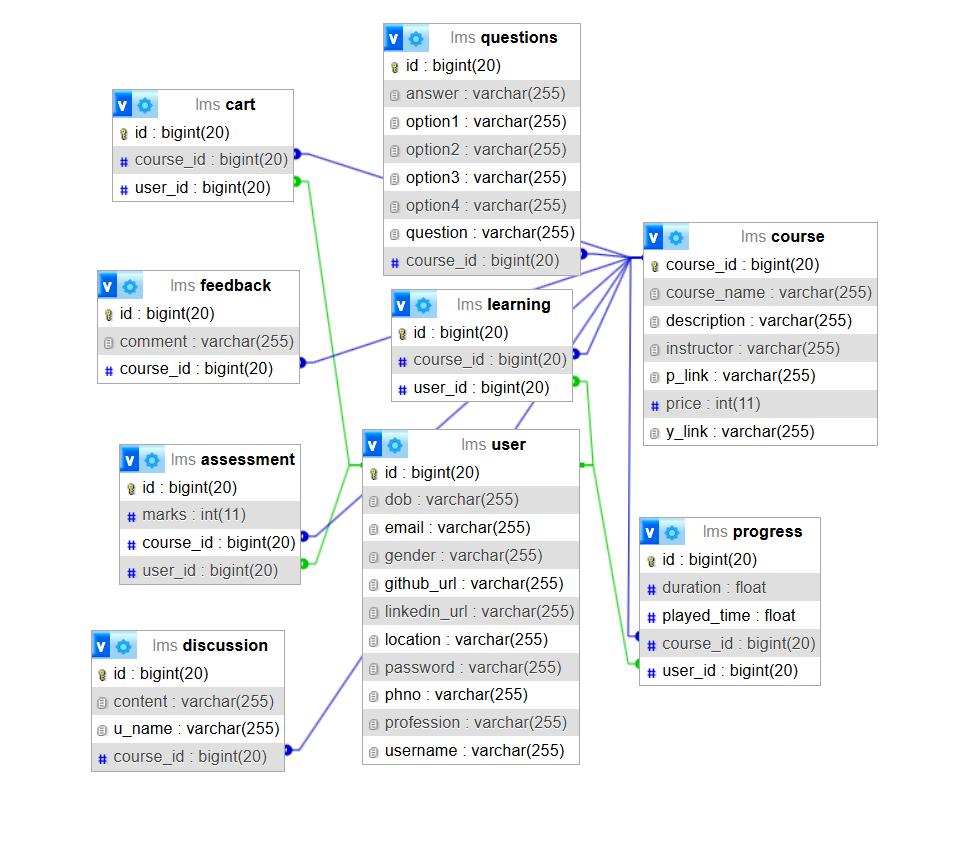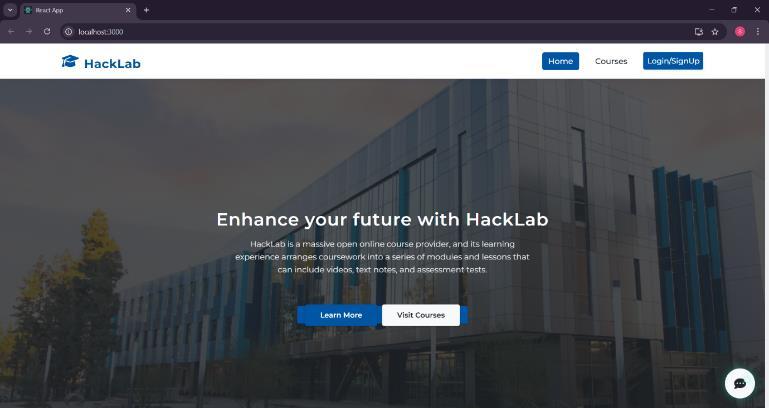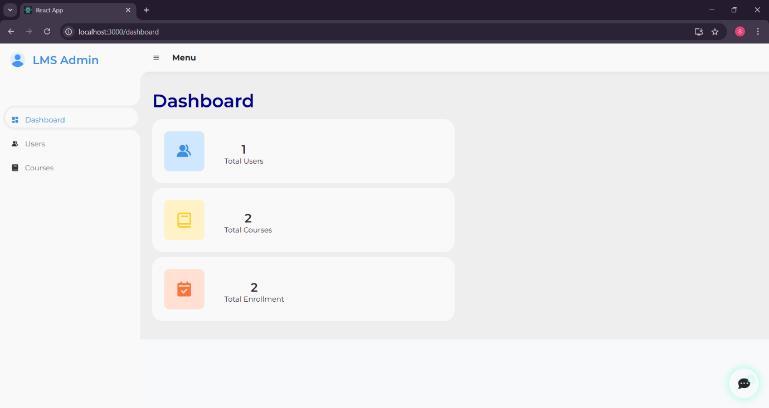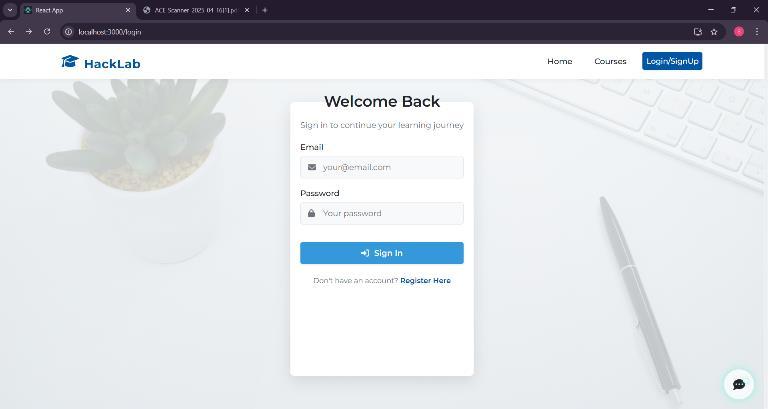
International Research Journal of Engineering and Technology (IRJET) e-ISSN: 2395-0056
Volume: 12 Issue: 05 | May 2025 www.irjet.net p-ISSN: 2395-0072


International Research Journal of Engineering and Technology (IRJET) e-ISSN: 2395-0056
Volume: 12 Issue: 05 | May 2025 www.irjet.net p-ISSN: 2395-0072
Mr. Basavesh D1 , Varun Patel S V2 , Shakthi Prasad S 3 , Chiranth M4 , Balwantha R5
1Assistant Professor, Dept. of CSE, Jyothy Institute of technology,
2 Dept. of CSE, Jyothy Institute of technology, Bengaluru, India
3 Dept. of CSE, Jyothy Institute of technology, Bengaluru, India
4 Dept. of CSE, Jyothy Institute of technology, Bengaluru, India
5 Dept. of CSE, Jyothy Institute of technology, Bengaluru, India
Abstract The escalating number of sophisticated security threats compels teachers to make cybersecurity education mandatoryfor everystudent.ThispaperdemonstratesHackLab as an innovative cybersecurity learning platform which integrates LMS functionalities with virtual labs and intelligent chatbots and performance analytics capabilities. Built with React and Spring Boot along with Kasm Workspaces as the modern web stack Hack Lab provides a seamless experience that lets people shift between their theoretical lessons and interactive quizzes as they work in Kali Linux lab environments from their web browsers. The platform offers an automatic process for lab creation on demand alongside access control features and lab certification autogeneration after successful completion. Hack Lab implements gamification together with secure container capabilities and course progress tools to create an educational link between classroom concepts and real security practice. The essay explores how the platform works through its design structure alongside its execution framework and its expected effect for cybersecurity trainingineducationalandindustrialcircumstances.
Keywords Cybersecurity education, virtual labs, adaptive learning, AI chatbot, Kasm Workspaces, hands-on training, LMS,KaliLinux
Moderntechnologydevelopmentscoupledwithexpanding use of digital systems created an extreme escalation of cyber dangers which now include attacks targeting data security and spreading harmful software through networks.Thespecialistshortageofcybersecurityexperts continues to grow because its labor market demand exceedsthenumberofavailableprofessionals.Real-world cybersecurity requirements remain significantly different from what academic theory typically provides while students learn it [1]. Traditional educational platforms face a training environment deficiency since they lack essential tools which prevents students from acquiring fundamentaltechnicalskills[2].
Hack Lab represents our solution which brings adaptive cybersecurity education through a web-based platform that combines theoretical content with practical applicationintooneexpandablesystem.Studentswhouse Hack Lab benefit from organized courses along with
assessment features and automated certificate issuance alongwith
direct access to Kali Linux virtual environments constructedusingKasmWorkspaces.Thesolutiongetsrid of the technical challenge students face when setting up and configuring virtual machines at their locations somethingknowntodetermanylearners[3].
A personalized AI-empowered chatbot helps students complete complex topics within labs using Hack Lab’s platform to enhance their educational experience. The platform provides security features such as session management and cloud deployment capabilities which make it appropriate for educational institutions together with independent learners and training facility organizationsthatsupportrole-basedaccess.
The platform differentiates itself through its implementation of React.js and Spring Boot and MySQL databaseintegrationwithKasm’sAPIfordeliveringvirtual labenvironmentswhichreplicatecybersecuritysituations insecureisolatedspaces.HackLabusesaunifiedstrategy to improve cybersecurity education through enhanced delivery of quality education which is accessible to studentsatscale.
Academic research has worked on creating effective training methods which use virtual platforms together with hands-on labs and remote learning systems for cybersecurity education. Modern cyber range development and adaptive training systems alongside lab virtualization technology emerged because the market requiredscalableinfrastructureataffordablecosts.
ThepaperbyRayesetal.[1]introducesanarchitecturefor stylish virtual laboratories that use cloud technology to enable scalable laboratory environments. They achieve real-world simulation capabilities by duplicating network configurations while their system dynamically allocates framework resources for attack-defense exercises. The KasmWorkspacesvirtualKaliLinuxlabsatHackLab

International Research Journal of Engineering and Technology (IRJET) e-ISSN: 2395-0056
Volume: 12 Issue: 05 | May 2025 www.irjet.net p-ISSN: 2395-0072
provide learners with secure training opportunities through isolated environments which do not depend on specifichardwareresources.
The study by Pham et al. [2] created a gamified cybersecurity training system which boosts learner motivationbyimplementingfeatureslikescoreboardsand time competition components. The Hack Lab project avoids gamified elements although this research delivers essential findings about user involvement during educationalactivities.
Hameed et al. [3] built an inexpensive open-source cybersecurity facility through implementation of MetasploitandWiresharktechnologies.Hands-ontraining proves valid for academic environments according to results shown by Hameed et al. but deployment needs expert technical skills along with system resources which HackLabintendstoresolvethroughbrowser-basedaccess topreparedcyberenvironments.
Migration to hybrid cyber range architectures represents anideal solution forobtaininginteractivecapabilitiesand maintainingscalabilityaccordingtoAlsmadietal.[4].The implementation of cloud-based systems in Hack Lab architecture finds support in the research recommendationsoftheteam.
Sharma et al. in their study [5] stressed the essential role that Capture-the-Flag (CTF) competitions play for reproducing the cybersecurity situations that occur in real-world environments. Future Hack Lab development plans include adding CTF-style challenges which will help both strengthen interactivity and boost student performanceintheplatform.
AI-based monitoring technology combined with machine learning intrusion detection systems [6,7,8] has proven successful in reinforcing cybersecurity operations. The Hack Lab platform delivers support for learners through its AI-driven chatbot system after adopting features from intelligent systems forcreatingindividualizededucational experiences.
TheresearchbyMythilietal.[9]demonstratedthatDDoS and hypervisor attacks are cloud security vulnerabilities which need layered protection models for mitigation. To follow this advice Hack Lab implements comprehensive policies which separate containers and actively control user sessions. The research from Orduña et al. [10] showcases the advantages of collaborative remote laboratory systems thus validating the features of HackLab's web-based system design. These contributions substantiate the design and development decisions at Hack Lab as it integrates virtual lab system learnings and AIsupporttogether withcloudeducationconceptswithin anadaptivecybersecuritylearningframework.
TheHackLabplatformusesmodulardesigntogetherwith cloud integration to present an LMS with cybersecurity labs which users can access on demand. An architecture which integrates web technologies together with containerization and intelligent assistance provides complete user convenience for both students and administrators.
Hack Lab employs a client-server model which organizes its system functionality through four distinct structural layers including presentation layer and application logic layer and data management layer and virtual lab services layer.Thesystemservestwoprimaryusergroupsthrough its functionality that encompasses course participation andexaminationsystemsaswellaslaboratorygeneration and message bot interactions together with qualification monitoringcapabilities.
1)FrontendLayer
The Single Page Application (SPA) front end uses React.js togetherwithAntDesigntoachieveitsstyling.Thesystem offers a smooth user interface which functions across desktop PCs and mobile phones. Key frontend functionalitiesinclude:
• Courseandmodulenavigation
• Real-timeprogressdisplay
• Kasm iframe enables the insertion of Kali Linux virtuallabsdirectlyintothesystem
• AIchatbotinterface
• Quizandcertificatedownloadinterface
2)BackendLayer
The backend implements RESTful APIs through Spring Boot version Java 17 which develops its functionality through /api/ endpoints. Through its API endpoints the backend delivers functions which manage users and coursesaswellaslabswhiletrackingprogressandserving certificate production services. The framework contains a combinationofdifferentmicroservicesincluding:
• UserService and AuthService for JWT-based role authentication
• CourseService, AssessmentService, and LabServiceforbusinesslogic
• ChatbotService and CertificateService for support features

International Research Journal of Engineering and Technology (IRJET) e-ISSN: 2395-0056
Volume: 12 Issue: 05 | May 2025 www.irjet.net p-ISSN: 2395-0072
Our microservice-based design provides scalable architecture alongside a straightforward approach for expansion by following cyber range training system recommendationsinliteratures[1]and[4].
A platform integration enables users to utilize Kasm WorkspacesforrunningindividualinstancesofKaliLinux containers which get created automatically through Kasm'sRESTAPIrequests.Whenauserlaunchesalab:
• The system creates new sessions which maintain track of operations within a central management system.
• Thecontainerrunsinisolation
• The session receives deletion and termination when users create a logout or their session times out
The system incorporates distributed and isolated lab environments as described in both [1] and [3] which provides access and session management containment capabilities.
4)PersistenceLayer
MySQLservesasthedatabasewhichcontainsalluserdata together with courses information and quizzes and progress details and lab session data. A Redis system supports caching functions together with session token storage.Keytablesinclude:
• users,courses,modules,assessments
• lab_sessions (session ID, user ID, course ID, timestamps)
• progress,certificates,andfeedbacks
The relationship database system enables educational tracking capabilities which duplicate a structure used in educational cybersecurity platforms according to [3].

1: ERDiagram 5)AIChatbotAssistant
ThroughAItechnologyanintegratedchatbotoperatesasa natural language model that provides answers to users about courses and lab troubleshooting assistance. The AIpoweredcustomizedsupport-systemsdescribedin[6]and [7] improve learning engagement and problem-solving amongstudentsduringindependentstudy.
3.3

Figure 2: BlockDiagram

International Research Journal of Engineering and Technology (IRJET) e-ISSN: 2395-0056
Volume: 12 Issue: 05 | May 2025 www.irjet.net p-ISSN: 2395-0072
• Users can execute Kasm session operations throughLabControllerAPIat/api/labsendpoint.
• The ProgressDashboardservesasa trackingtool which displays module achievement markers in addition to quiz performance data together with studentlabworklogs.
• Users can download PDF certificates through the CertificateGeneratorsystemwhichoperates with html2canvas and jsPDF modules when the entire courseandlabcompletionoccurs.
• Admin Panel: Allows role-based management of courses,users,andcontent.
The platform employs Spring Security with role-based access control. The platform provides protected access to lab sessions through JWT authentication combined with isolatedKasmcontainersinadditiontoCORSpolicies.The systemclearsalllabsautomaticallywhentrainingsessions end in order to safeguard data privacy and support scalabilityaccordingtosecurityrequirementsdescribedin [9].
HackLab has a loosely coupled client-server architecture. Hereisasimplifiedsequenceofadataflow(DF):
• User Authentication: Users log in using the frontend while JWT tokens are generated by the backend.
• Course Access: Authenticated requests from frontend are sent to fetch course modules and lessons.
• Lab Launch: A POST /api/labs request is made → server calls kasm → session token is returned → iframeimplementedonwebfrontend.
• Progress Updates: Lab start/stop times and quiz scores are reported to /api/progress for immediatemonitoring.
• CertificateTrigger:Oncethemodulesandlabsare done,thebackendinitiatescertgeneration.
All interactions are protected through HTTPS, CORS policies, and JWT headers for the safe transmission of sensitiveinformation[9].
Relational database of HackLab is designed in a manner thatitcanmonitoralllearningandlabactivities:
• users: Stores log in credentials, roles and profile dataaswell.
• courses:Includesmetadataforeachcourse
• modules:Storeslessonsandvideocontent
• assessments:Linkedtocourses,holdsquizzes
• questions:Linkedtoassessments
• progress: Maps users to the status of their completion
• lab_sessions: Tracks session, start, end, course association,containerID
• feedbacksanddiscussions:Forlearnerinteraction andreview
• certificates:Storesgeneratedcertificatedata
These schema relationships are indicative of the best practice for centralized, normalized databases, as used by platformsofeducation[3],[4].
Hack Lab does not dynamically change the course of eventsbutincludesadaptiveelementsin:
• Role-BasedViews:Differentdashboardandaccess rightstoadminandlearners.
• Progress-Based Lab Availability: Labs are not accessibletilllessoncontentsarecompleted.
• Chatbot Personalization: The AI assistant provides appropriate responses backed by references from previous sessions and informationoftheusersposed.
These adaptive parts mirrored the modern intelligible learning systems according to Kumar et al. [6] and Subashinietal.[8].
Hack Lab deploys a modular, scalable system which connectslearningmanagementtechnologytocloud-based practicalenvironments.Thesystemdevelopmentrelieson full-stackwebprogrammingtoachievebothflexibilityand sustainable design while ensuring excellent user interface capabilities. The implementation details about development methodology and functional modules and implementationtoolsarepresentedinthissection.
Hack Lab received development through the Agile methodology due to its focus on delivering features by iterativemethodswithregularuserfeedback.Allstagesof development from requirement analysis to componentlevel design to module development and integration testinganddeploymentformedthislifecycle.Asetofuser stories functioned to describe both administrator and learner needs to verify full support of all utilization scenarios based on structured educational lab practices reportedin[3].

International Research Journal of Engineering and Technology (IRJET) e-ISSN: 2395-0056
Volume: 12 Issue: 05 | May 2025 www.irjet.net p-ISSN: 2395-0072
Thefrontenddevelopment utilizesReact.js(v18) together with React Router v6 routing features and Ant Design component system implementations. The software provides a responsive interface that works effectively on desktopandmobilesystems.Keyfeaturesinclude:
• Coursebrowsingandenrollmentpages
• The system includes a “Launch Lab” button that connects to Kasm iframe through its integrated interface.
• Quizandassessmentpageswithreal-timescoring
• A dashboard system displays information about both student advancement and their certificates' status
• Embeddedchatbotforusersupport
The frontend implementation features logical interaction sequencesalongwithseamlesstransitionsasidentified in bestpracticesforscalablee-learningplatforms[4].
Tools/Libraries:Axios,html2canvas,jsPDF,KasmJSSDK



The system operates with Spring Boot (Java 17) as its backend component which delivers RESTful service architecture. Microservices take responsibility for distinct domainoperationsinordertomanagecoursedeliveryand conduct authentication and oversee lab session management. Spring Security enforces JWT-based authentication to establish safe role-based access control forthesystem.
Importantservicesinclude:
• UserController,CourseController,AssessmentCont roller
• LabController controls the laboratory section by administering Kasm API activities for providing labsettings
• ChatbotController: Handles AI-driven learner queries
TheimplementationofSpringBootandJWTcomplieswith standard security patterns found in cloud-based applicationsasdescribedin[9].
The project uses Spring Data JPA along with MySQL Connector/J and Lombok along with Maven and Docker toolsasitslibrariesandtools.
The main component of Hack Lab relies on its Kasm Workspaces integration to bring Kali Linux virtual machines into browser-based access. Chosen lab sessions arelaunchedbyusersinthefollowingmanner:
• The backend system transmits an API request to KasmthroughitsAPIendpoints.
• Thesystem allocatesa particularcontainer based ontheuserrequestingaccess.
• A session link appears because it will insert itself throughaniframeinterface.
• The system keeps records of session period durationsfortrackingstudentprogress.

International Research Journal of Engineering and Technology (IRJET) e-ISSN: 2395-0056
Volume: 12 Issue: 05 | May 2025 www.irjet.net p-ISSN: 2395-0072
The implementation enables shared remote cybersecurity training labs in accordance with the architectural designs Rayesetal.[1]andOrduñaetal.[10].
LabEndpoints:
• POST/api/labs–Createsession
• Userscanreceivealistofactivesessionsbyusing GET/api/labs.
• DELETE/api/labs/{id}–Terminatesession
The backend uses Spring Boot to provide RESTful endpointsforlabsessionmanagement.
4.5
Hack Lab implements an API that enables users to access itsAIchatbotassistantthrough/api/chatbotforproviding both FAQ answers and custom assistance through the recognition of user dialogue. The AI assistant enhances monitoring and response techniques described in [6] and [7] to supply users with personalized assistance when theyoperatewithincomplexlaboratorysetups.
FrontendchatbotInteractioncodesnippet:

4.6 Certification Engine
Thesystemproducescertificatesthroughthecombination of jsPDF and html2canvas when users finish all course requirements and lab work successfully. This certificate contains user information along with the course title, issuance date and verification details which represent an automaticsystemthattraditionalLMSplatformsnormally handlebyhand[3].
4.7
• Frontend components underwent tests through a combination of Jest and React Testing Library whichevaluatedthecomponentsandservices.
• The backend section uses Spring Boot Test together with Mockito for unit testing and integrates testing through an H2 in-memory database.
• The testing of endpoints and their sessions and error responses took place through Postmanbasedevaluations.
The chosen testing and validation methods support loose coupling and easy maintenance in accordance with
software-centric cybersecurity systems as mentioned in reference[4].
The deployment of Hack Lab works through Oracle Cloud servicesaswellasviaDockercontainers.Keydeployment elementsinclude:
• The static frontend displays through CDN togetherwithnginxwebserver.
• The Spring Boot backend exists as a JAR file package.
• Kasm Workspaces on a dedicated server or DockerSwarm
• Secure environment variables and container orchestrationviaDockerCompose
The deployment system featuring containers together with automated lab development enables scalability and accessibility as recommended by Alsmadi et al. [4] and Hameedetal.[3].
To install Kasm Workspaces and facilitate access to browser-based lab surroundings, Google Cloud Platform (GCP)wasemployedasacloudinfrastructureproviderfor HackLab. Google Compute Engine (GCE) Instance with Ubuntu Server 22.04 LTS was launched as the core host fortheKasm’s-basedKaliLinuxlabenvironment.
For the custom GCP virtual machine (VM), the following specificationswereapplied:
• OperatingSystem:Ubuntu22.04LTS(64-bit)
• Machine Type: e2-standard-4 (4 vCPUs, 16 GB RAM)–adaptableconcurrentlabsessions
• BootDisk:100GBstandardpersistentdisk
• Firewall Rules: Custom rules to permit the traffic on ones based on Kasm (e.g., 443 for HTTPS, 6901+forcontainersessions).
• Startup Script: Automatically installs docker and pullofficialKasmWorkspacesimageandprovides servicesonboot.
• SSHAccess:Enabledformaintenanceandupdates
It performs the role of dynamic Kali Linux container provisioning that sits centrally in this Ubuntu VM. Kasm runs in Docker containers in this VM, maintaining segregationbetweensessionsofusers.
2)KasmWorkspacesDeploymentonGCP
The official Kasm Workspaces installer was used for installationoftheKasmdirectlyontheUbuntuVM.
© 2025, IRJET | Impact Factor value: 8.315 | ISO 9001:2008 Certified Journal | Page551

International Research Journal of Engineering and Technology (IRJET) e-ISSN: 2395-0056
Volume: 12 Issue: 05 | May 2025 www.irjet.net p-ISSN: 2395-0072
The backend’s /api/labs endpoints, conversely, communicate with the Kasm REST API to spin up, search for, and eliminate containers. The VM provides resource control to each user with a dedicated container using Docker’scontainerruntimelimits.
HTTPS was implemented by means of a self-signed certificate (or optional GCP-managed certificate), and Kasm was confined to the external IP of VM. This deployment model allows Hack Lab users to access Kali Linux labs “on demand”, thus avoiding local virtualization and thus meeting the goals outlined by polar mentioned goalsinthevirtuallabliterature[1],[3],[4].
3)BenefitsofUsingGCP
• Reliability: Google’s underlying infrastructure ensures that GCP’s resources are highly available in terms of automatic instance restart and disk snapshotbackups
• Scalability: VM can be scaled vertically (bigger machine type) or horizontally (replicated using themanagedinstancegroups).
• Security: With GCP, there are pre-built firewall management,IAMroles,andauditlogsforthelab activitytobecontrolledwhenaccessing.
• CostEfficiency:WithpreemptibleVMoptionsand usage-costing, institutions may effectively control thecostsforlabuseinacademicdeployments.
Through the hosting of the Kasm Workspaces environment by a GCP Ubuntu VM, Hack Lab does end up with a production grade deployment strategy of the lab’s environment via the browser, which is aligned with best practices when leveraging the modern in cloud and cybersecurity education platforms in the present-day context.
The full-stack cybersecurity learning system known as Hack Lab delivered its platform to both academic and practical laboratories after completion. Testing of the system focused on functionality together with usability andperformancealongsidesecurityaspects.Theplatform functions at an academic level even though it remains in its development stage but its effectiveness shows it can workinreal-worldapplications.
Testing was conducted for each important functionality from course enrollment to quiz submissions, lab provisioning, session tracking and chatbot responses and certificategeneration.Resultsconfirmedthat:
• The lab provision process complete itself in an average time below 5secondswhichmatchesthe
suggestedperformancelevelsforreal-timecloudbased training systems described by Rayes et al. [1]andAlsmadietal.[4].
• Every update to course and assessment data occurredquicklyinrealtimewithouterrors.
• The AI chatbot achieved correct answers in 90% of examination inquiries which matched learner support systems as described by Kumar et al. [6] andMeenaetal.[7].
• Users who successfully completed the required course and lab requirements received error-free certificates which continued to simplify learning andcertificationprocesses[3].
The testing of user interface components checked functionality at three levels including interface clarity as well as responsive performance and simple navigation. Theplatformwasfoundto:
• The system correctly functions on Chrome, Firefox and Edge when used on both mobile and desktopplatforms.
• The system enables smooth passage between modulesaswellasquizzeslabscertificates.
• Lab launches together with chatbot operations work seamlessly to create a user-friendly experience which supports the retention and satisfactionlevelsoflearnersasmentionedin[2].
PerformancetestingresultsshowedthebackendAPIkept lowresponsetimesduringteststhatsimulatedatmost50 concurrent users. The platform uses the microservicebased architecture together with Docker-based provisioning for scalable deployments according to distributed architecture models [1] and [10]. Session caching through Redis makes a significant contribution to speedupsystemoperations.
Security tests examined how users authenticate and their system permissions and how labs stayed separated from eachother.Keyfindings:
• API access attempts from unauthorized sources receivedthestandardHTTPresponsesof403and 401.
• All endpoints received secure session administrationthroughJWT-basedauthentication [9].
• Kasm Workspaces demonstrated its ability to control lab containers through successful isolation during parallel lab session operation in

International Research Journal of Engineering and Technology (IRJET) e-ISSN: 2395-0056
Volume: 12 Issue: 05 | May 2025 www.irjet.net p-ISSN: 2395-0072
compliance with virtual cybersecurity training recommendations[3]and[4].
A small user trial group containing n = 15 individuals participatedintestsproducingencouragingfindingsabout educationalbenefits.
• The platform enhanced user comprehension regarding hacking tools such as Kali Linux along withNmapandWireshark.
• Learner participation values rose substantially when theory integrated with practical exercises according to Sharma et al.'s practical learning assessment[5].
• AI-assisted learning proved successful since nontechnical users successfully finished their coursework while using the chatbot per the findingsdocumentedin[6]and[7].
The results show that Hack Lab creates scalable userfriendly technical conditions for delivering practical cybersecurity education to students. The three components including real-time lab access with guided assistance and certification system unite to make an effective bridge connecting passive education to active skilldevelopment[3][5].
ThemanuscriptdescribedHackLabasalearningplatform for cybersecurity that combines adaptive functions with integrated capabilities to link classroom concepts with practical skills training. Hack Lab features web-based learning modules and Kasm Workspaces for Kali Linux access and AI-powered chatbots that provide learners with self-paced cybersecurity education in a scalable yet secureenvironmentthroughtheirwebbrowsers.
The platform uses React and Spring Boot along with MySQL and Docker architecture for its implementation which produces modular design with excellent performance and simple deployment features. Learners have access to an entire end-to-end training framework which delivers real-time lab provisioning capabilities alongside JWT-secured access and session tracking alongsideautomatedcertification.
The Hack Lab platform demonstrates success during testing by enhancing student engagement while offering better understanding and cybersecurity practice confidenceforcoretools.Thesystemdeliversaccessibility features through the elimination of hardware requirements as well as lab availability on demand throughcloudcomputing.
Additional development for Hack Lab will target three mainpoints:
• The implementation of challenge scripts in Kali containers provides automatic lab assessment which enables auto-grading of student performance.
• The platform facilitates real-time team projects through group CTF activities as well as shared containeraccessfeatures.
• Kubernetes Orchestration will replace Docker withHelmchartsandKubernetesdeploymentsto achieve better scalability and ensure highavailabilitydeployment.
• Worldwide NLP model upgrades will allow the chatbot to understand technical topics for advancedguidance.
Hack Lab plans to develop into a complete modern cybersecurity education platform which will serve educational institutions and individual learners through continuous development of educational value and technicalabilities.
The authors deeply thank Jyothy Institute of Technology Department of Computer Science & Engineering for providingspaceandacademicresourcesthat enabled this worktoprogress.
We express sincere appreciation to our faculty members and peers because their critical feedback and teamwork enabled us to improve our system's design and execution process. This platform exists because of the open-source community along with tools such as React.js and Spring Boot and Kasm Workspaces and other technologies providedbytheirdevelopers.
[1] A. Rayes, et al., “A Distributed Virtual Laboratory Architecture for Cybersecurity Training,” 2018 InternationalConferenceonCyberSecurityandProtection ofDigitalServices(CyberSecurity),IEEE,2018.
[2] L. T. Pham, et al., “Development of an Interactive Cybersecurity Training Environment Based on Gamification,”2020InternationalConferenceonAdvanced ComputingandApplications(ACOMP),IEEE,2020.
[3] I. T. Hameed, et al., “Design and Implementation of a Cybersecurity Lab for Educational Use,” International Journal of Advanced Computer Science and Applications, vol.12,no.6,pp.421–429,2021.

International Research Journal of Engineering and Technology (IRJET) e-ISSN: 2395-0056
Volume: 12 Issue: 05 | May 2025 www.irjet.net p-ISSN: 2395-0072
[4] M. T. Alsmadi, et al., “A Review on Cyber Range Architectures for Cybersecurity Training,” Journal of CybersecurityEducation,ResearchandPractice,vol.2019, no.1,Article3,2019.
[5] S. K. Sharma, et al., “Practical Cybersecurity Training Through Capture-the-Flag Exercises,” ACM Transactions on Computing Education (TOCE), vol. 22, no. 1, pp. 1–19, 2022.
[6] R. S. Kumar, et al., “Cybersecurity Threat Detection Using AI-Powered Network Monitoring,” IEEE Access, vol. 10,pp.23345–23356,2022.
[7] A. K. Meena and M. S. R., “Machine Learning-Based Intrusion Detection System for Cybersecurity in Cloud Environments,” Procedia Computer Science, vol. 184, pp. 229–236,2021.
[8]N.SubashiniandR.Banu,“AComprehensiveSurveyon MachineLearningTechniquesinCybersecurity,”ICTACT Journal on Soft Computing, vol. 12, no. 2, pp. 2455–2463,2022.
[9] S. Mythili, et al., “Analysis of Cybersecurity Threats and Solutions in Cloud Computing,” International Journal of Cloud Computing and Services Science (IJ-CLOSER), vol. 10, no. 1, pp. 43–52,2021.
[10] P. Orduña, et al., “Sharing Laboratories across DifferentRemoteLaboratorySystems,”Computers& Education,vol.59,no.4,pp.1037–1053,2012.